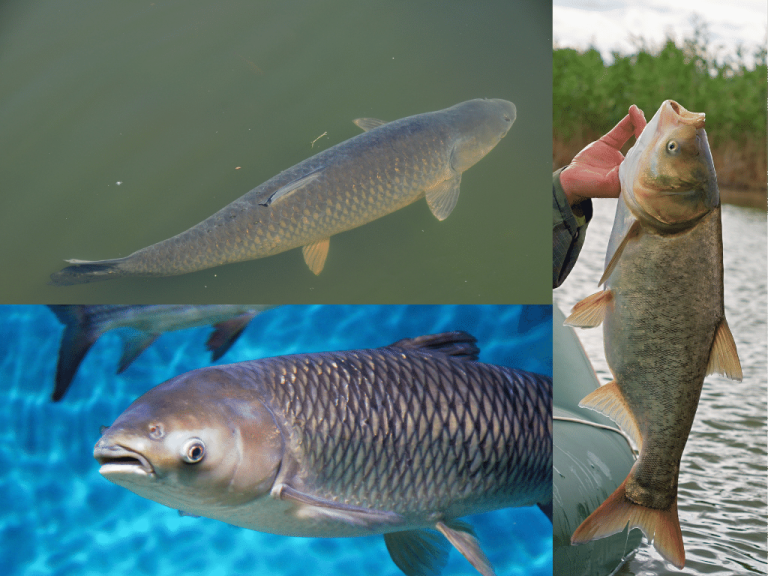Black carp, grass carp, silver carp, bighead carp, and crucian carp are the five major fish in freshwater aquaculture in China. They belong to the Cyprinidae family and are widely found in rivers, lakes, and ponds across China.
Black carp and crucian carp live at the bottom of the water, feeding on benthic insects and mollusks. Grass carp live in the middle layer of the water, feeding on aquatic plants. Silver carp and bighead carp live in the upper-middle layer of the water; silver carp feed on phytoplankton such as green algae, diatoms, and other unicellular algae, while bighead carp filter-feed on rotifers, water fleas, and other small crustacean plankton. These fish live at different water levels and feed on different food sources. When they are cultured together in the same pond, they do not have significant conflicts. Instead, they can complement and utilize each other. For example, grass carp eat aquatic plants, and their feces settle at the bottom of the water, effectively fertilizing the pond and promoting the growth of planktonic plants and animals, which provide food for silver carp and bighead carp. Crucian carp are omnivorous and eat everything, including the food remnants left by black carp and grass carp, thus helping to clean the pond. Silver carp and bighead carp, living in the upper-middle layer, swim rapidly and flexibly at the water surface, with silver carp sometimes jumping out of the water. Their movements stir the water, promoting oxygen dissolution, which benefits the respiration of the fish. Culturing these fish together in one pond can make full use of different water layers, save on feed, simplify management, reduce costs, and increase yield. Therefore, one of the key experiences in fish farming is “mixing”—culturing various fish species of different sizes and water layers together.
Of course, when culturing fish together, it is also necessary to pay attention to the reasonable distribution of the different fish species, which must be determined based on the pond environment, water quality, and the living conditions required by the different fish species at various growth and development stages. During the fry and juvenile stages, these fish mainly feed on plankton and require high oxygen levels, so they should be cultured at low densities. Fertilization of the pond should be emphasized to promote the growth of feed. When the fish reach a certain size, their feeding habits differentiate, and they should then be cultured in appropriate proportions. In ponds with richer water quality, more silver carp and bighead carp can be stocked. In ponds with poorer water quality and more aquatic plants, fewer silver carp and bighead carp should be stocked, and more grass carp should be raised. This way, a greater harvest can be achieved.

